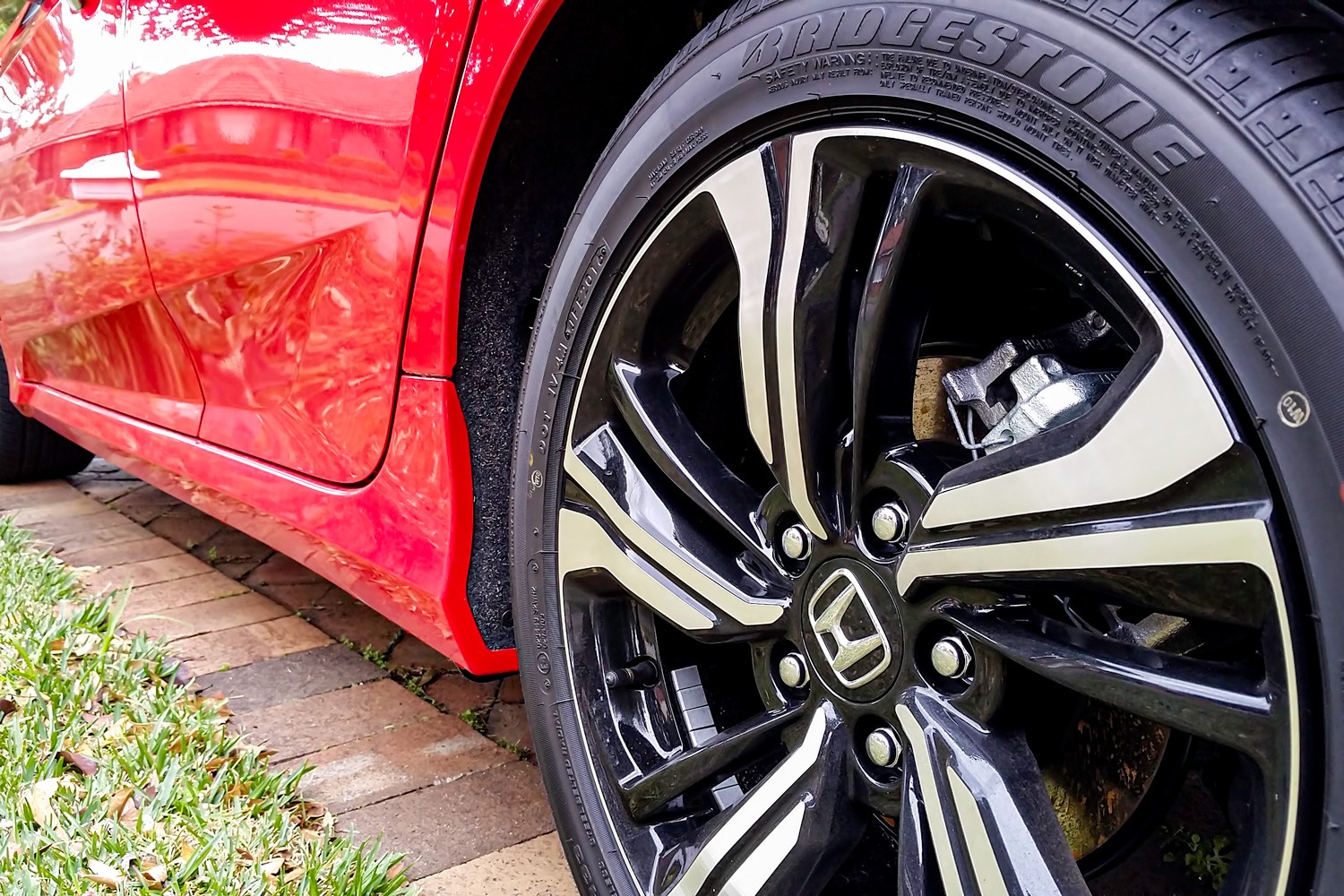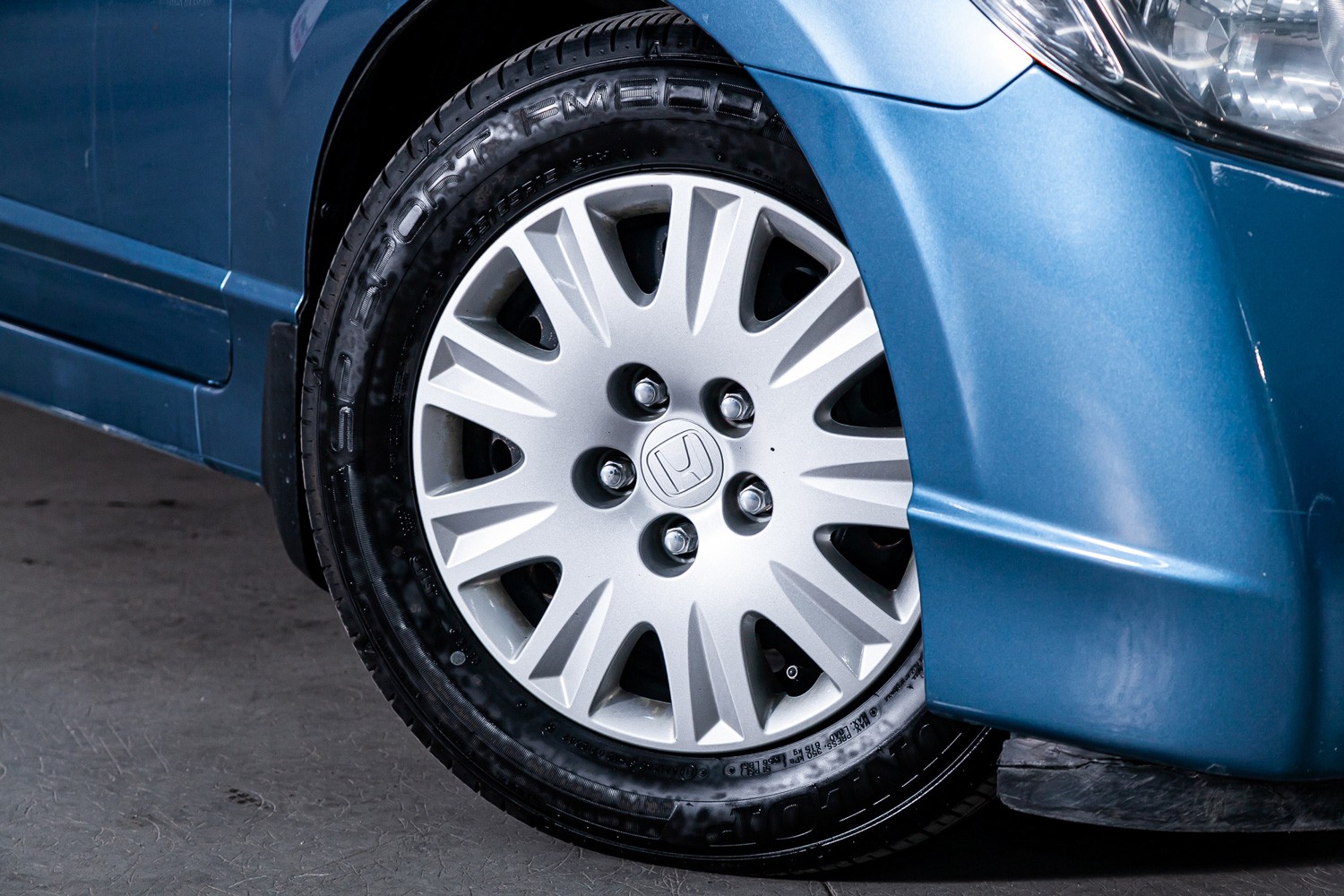Is your TPMS (Tire-Pressure Monitoring System) still on after you filled up your tires with air, and do you want to know how to reset the TPMS light on your Honda Civic? You’ve come to the right place, for we have researched this question, and we have the answer for you.
Here are the simple steps to reset the TPMS light on your Honda Civic:
- Park your Honda Civic on a level area before you reset the TPMS light.
- Place the gear on “Park,” but leave the car key in the “Accessories” position and leave the engine off.
- Press the “Home” button. This is often found on the left side of your steering wheel.
- Slide the selector roller up or down and look for “Settings.”
- Press the selector roller to select “Settings.”
- Slide the selector roller once more and look for “TPMS Calibration.”
- Press the selector roller to select “TPMS Calibration.”
- This time, slide the selector roller and look for “Calibrate.”
- Press the selector roller to select “Calibrate.” You will receive a message on the screen that says, “Calibration Started.”
- If you receive the message “Calibration Failed” instead, repeat Step 9.
- Drive your Honda Civic. The calibration process will automatically finish while you’re driving. Expect to drive a few minutes to half an hour before the calibration completes itself. It is best to drive at speeds of 30 mph to 60 mph during calibration. The calibration will turn off the TPMS indicator once it completes.
We also have the steps to reset the TPMS light on a Honda Civic that has a four-way controller instead of a selector roller. Learn about them in the succeeding sections. Read on!
![Honda Civic, close-up of the headlight, bumper, wheel. Photography of a modern car - How To Reset Tire Pressure Light [TPSM] On A Honda Civic](https://vehq.com/wp-content/uploads/2022/06/HONDA-1.png)
When to reset the TPMS light on a Honda Civic?

The TPMS uses sensors to provide a real-time report on the air pressure inside the tires of vehicles like your Honda Civic. It normally turns an indicator light on your dashboard that tells you that one or more tires on your Honda Civic are below the recommended air pressure.
As mandated by the NHTSA (National Highway Traffic Safety Administration), the TPMS light will turn on if any of the four tires of your Honda Civic goes 25% below the recommended tire pressure.
Maintaining the correct air pressure on your tires is important. Under-inflated tires will negatively impact the fuel efficiency of your Honda Civic. Your tires also wear out faster the lower the air pressure in them.
TPMS is important because tires naturally lose air. A functioning TPMS allows drivers to monitor the air pressure in their tires and refill the air as needed.
Some drivers are unaware that the TPMS in their Honda Civic needs to be reset after completing common tire-related activities. Always reset your TPMS after filling your tires with air. Replacing tires and rotating them require you to reset your TPMS.
Resetting will force your TPMS to redetect the air pressure and use the new air pressure as a baseline for any changes in pressure. If the air pressure that it detects after resetting is within the recommended pressure, then the TPMS indicator or light with turn off.
How to reset the TPMS light on a Honda Civic with multi-directional control?

- Follow the first three steps for resetting the TPMS above.
- Press the “Exit” button on your steering wheel. It has an icon that looks like a series of three windows. It has a solid white circle on the right side with a knockout “i” on the center. Some earlier models have a series of three windows but don’t have a solid white circle with an “i” in the center.
- Press the “Menu” button. This is usually located below the “Exit” button.
- Use the directional buttons on the left side of the steering wheel to navigate the menu.
- Navigate to “Customize Settings.”
- Press the “Source” button in the middle of the directional button. In some models, this button is labeled “OK” instead.
- Navigate to “TPMS Calibration.”
- Press the “Source” button once more.
- Navigate to “Initialize.”
- Hit the “Source” button once more to start TPMS calibration on your Honda Civic.
- A confirmation window will ask if you would like to proceed with the TPMS calibration or not. Use the directional buttons to select “Yes,” then press the “Source” button to confirm.
- A notification window will appear to notify you that the TPMS calibration has been initialized.
- Drive your Honda Civic as normal. The TPMS will redetect the air pressure in your tires as you drive. If it detects normal or acceptable air pressure levels for all four tires, then it will turn off the TPMS light.
TPMS Used By Most Honda Civic
Most Honda Civic models use an indirect-type TPMS. This type of TPMS measures the shape and diameter of your tires relative to the speed of your car.
All tires spin differently as they lose air pressure. Indirect TPMS measures the diameter of the tires as they spin.
A tire’s diameter becomes smaller as it loses air pressure. So, they complete one rotation faster than tires that have the right amount of air pressure. Indirect TPMS measures this change and notifies you if the drop in diameter is too much.
How to reset the TPMS light on a Honda Civic with a TPMS reset button?

Some Honda Civic models reset the TPMS indicator light automatically after filling your tire with air. When you drive around with the right air pressure in your tires, the TPMS will detect this and eventually turn off the TPMS indicator light.
In other Honda Civic models, there is a physical button at the bottom left area of the dashboard. This button has the same icon as the TPMS indicator light.
Follow the steps below to reset the TPMS light through this button:
- Follow the first two steps for resetting the TPMS indicator light above.
- Locate the TPMS reset button on the bottom left of your dashboard. It is often at the bottommost array of buttons on the left side of the dashboard.
- Press and hold the TPMS reset button and wait for the TPMS indicator light to blink.
- Release the TPMS reset button. The blinking TPMS light should turn off. This means that the TPMS initialization process has started.
- Drive your Honda Civic as normal, and the TPMS will automatically recalibrate the air pressure data based on the four tires' shape, diameter, and individual speed.
Why is my tire pressure light on after getting new tires Honda Civic?

The TPMS will need to recalibrate itself using the air pressure on the new tires. The TPMS light will turn on after getting new tires because the values that are on the TPMS are the ones from the old set of tires.
You will need to reset your TPMS indicator following the steps above based on the type of system you have on your Honda Civic. Resetting will make the TPMS dump the old data and recalibrate using the information of the new tires.
Keep in mind, however, that the TPMS light will not go away if one or more of the new tires have lower than acceptable air pressure. If the TPMS light is still on after driving for 30 minutes or so, check the tire pressure on your new tires and refill with air if the pressure is low.
There is a sticker on the driver-side door that contains the tire pressure recommendation from Honda.
Will disconnecting the battery reset TPMS?
The computer memory cars commonly use can only store data while receiving a continuous supply of electrical energy. Once there is an interruption in the electrical energy supply, the information stored in your car's memory will be deleted.
Thus, disconnecting the car battery and draining the car of any stored electrical energy will reset the TPMS because its data will be deleted. Not only will disconnecting the car battery reset the TPMS, but it will also delete the data of the other systems in your Honda Civic, including the date and time.
Is it OK to drive with a tire pressure light on?

It is OK to drive with the TPMS or the tire pressure light on as long as you’re headed to have some air added to your tires at an air pump.
However, driving with the TPMS light on because you’re ignoring it is not safe.
Tires with low air pressure make it harder to control your Honda Civic—especially at high speeds and when driving on wet roads. Additionally, the lower the air pressure on your tires, the higher the chances of a blowout.
Thus, when you see the TPMS light on, drive towards the nearest air pump to restore proper air pressure to your tires. Reset the TPMS light after filling your tires with air, and you should be good.
Conclusion
There are different ways to reset the TPMS light based on the type of system that you have on your Honda Civic. It is also equally important to know when to reset your TPMS light, like after rotating your tires or after installing a new set.
If you enjoyed reading this article, you might find the articles below equally enjoyable to read:
How Do I Know What Engine Is In My Honda Civic?
Honda Civic Makes Loud Noise When Accelerating – What’s Wrong?
